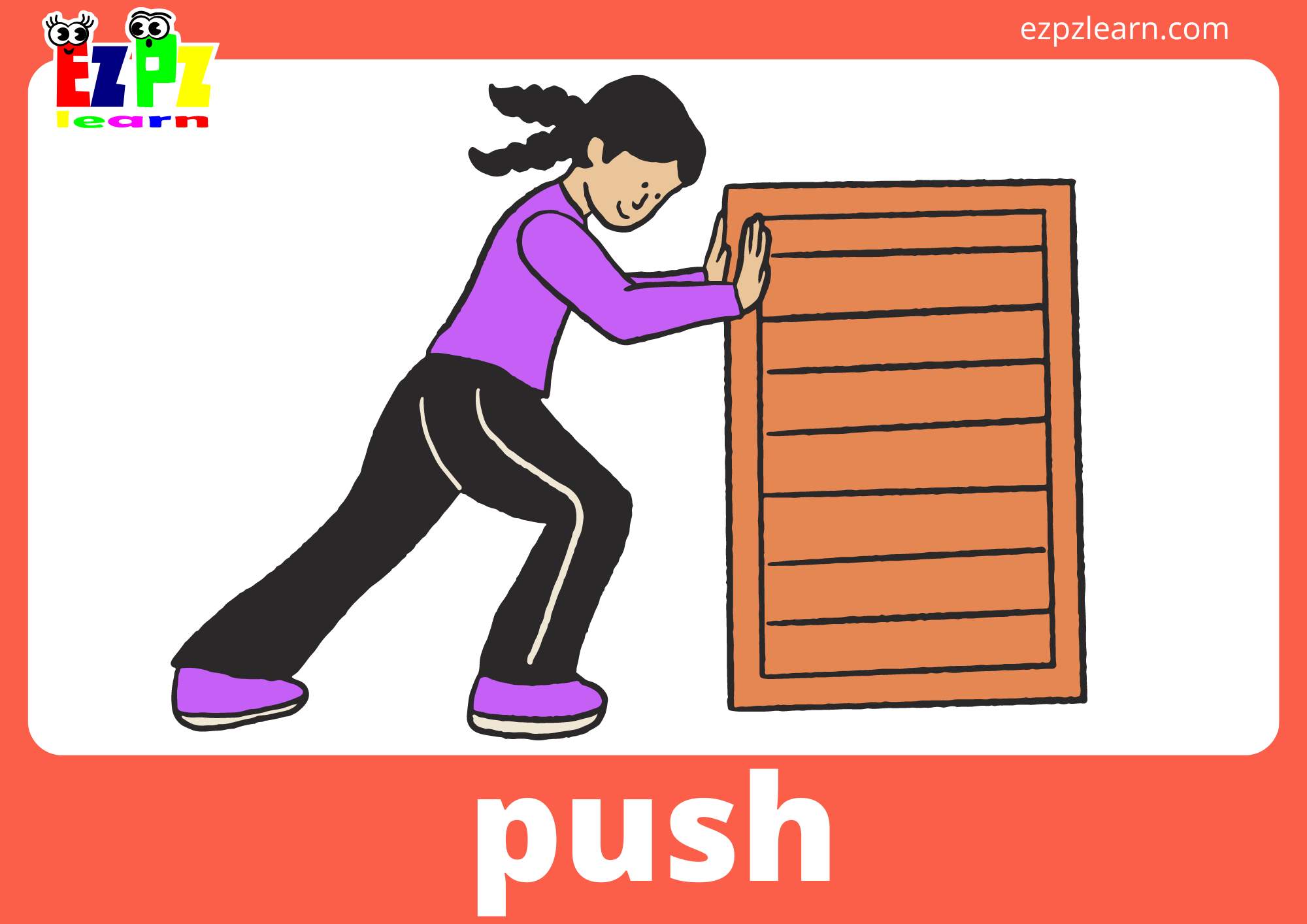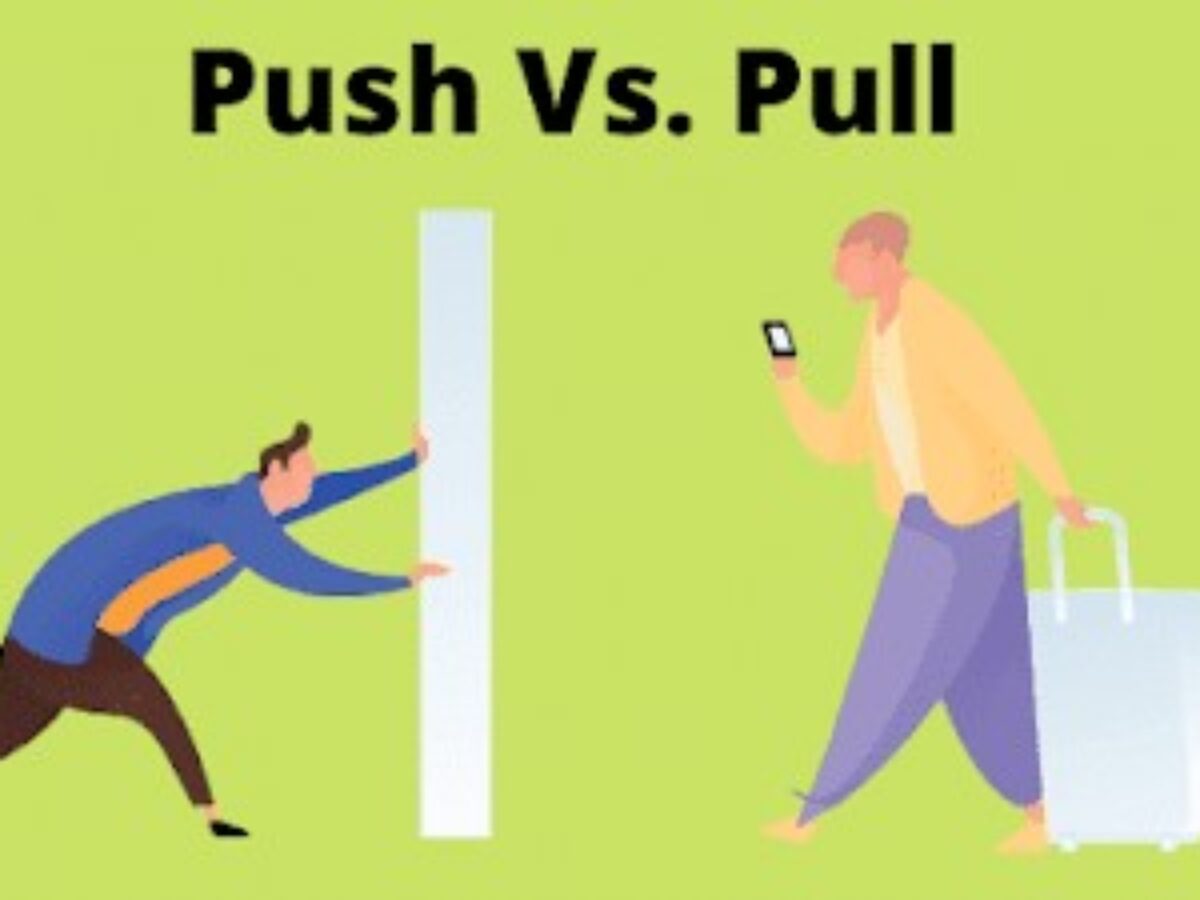Have you ever stopped to ponder the phrase "push button"? It sounds so simple, doesn't it? Just a quick press, and poof, something happens. But is this idea of effortless action, of everything being just a button press away, truly reflective of how things work in our world? It's a question that, you know, really gets you thinking about the hidden gears and intricate workings behind what seems so easy.
Interestingly, the word "push" itself carries a lot of weight, a bit like the different kinds of force we encounter daily. Think about the 2009 American superhero thriller film, "Push," for instance. That movie, directed by Paul McGuigan and written by David Bourla, had a very different kind of "push" at its core. It starred Chris Evans, Dakota Fanning, Camilla Belle, and Djimon Hounsou, and it was all about two young Americans with special abilities who had to race to find a girl in Hong Kong. That kind of "push" was about mental and physical force, a struggle, not just a simple press.
So, when we talk about "push button," we are, in a way, exploring both the very literal act of pressing something and the broader idea it represents. It's about applying pressure, often with your hands, to move something or make something happen. This could be pressing a button on a keyboard, or even trying to push a door that just won't budge. But does this simple action truly mean the process is simple all the way through? We're going to explore that, you know, and see what's really going on.
Table of Contents
- What Does "Push Button" Even Mean?
- The "Push" Film and Its Unique Take
- Is True "Push Button" Simplicity a Myth?
- Where Do We See "Push Button" in Our Lives?
- The Appeal of "Push Button" Solutions
- FAQs About "Push Button"
- Embracing the Nuance of "Push Button"
What Does "Push Button" Even Mean?
When someone talks about something being "push button," they are usually describing a process that seems very simple. It suggests that little to no effort is needed. This idea, you know, often makes us think of immediate results.
The Literal Act of Pushing
The core meaning of "push" is to press against something with force. This action aims to move it or impel it forward. For example, you might push a door to open it, or push a shopping cart down an aisle. It's a very physical thing, really.
When you push a button, you are exerting downward pressure on it. This action makes the button move into a specific position. That movement, you know, then triggers something else. It's a direct cause and effect, physically speaking.
Think about a remote control. You press a button, and the TV turns on. The act of pressing is very real, very tangible. It's a small, precise application of force, and that's just a little bit of what it means.
Beyond the Physical: A Metaphor for Ease
The phrase "push button" goes beyond just the physical act. It has become a way to describe something that is very easy to use. It suggests that a task or system is straightforward, requiring minimal thought or skill. This metaphorical use is, you know, quite common in our daily conversations.
For instance, people might talk about a "push button solution" to a problem. This means they expect a quick fix, something that needs very little effort from them. It implies simplicity, a kind of hands-off approach. This is why, you know, the term holds such appeal.
It's about the feeling of effortlessness, the promise of convenience. This is the essence of the metaphor, where the button itself represents ease. So, in some respects, the "push button" is very real in how we perceive things.
The "Push" Film and Its Unique Take
The 2009 film "Push" offers a fascinating, yet different, perspective on the concept of "push." It's not about pressing physical buttons for everyday tasks. Instead, it explores a world where individuals possess extraordinary mental abilities, and these abilities are, in a way, their own form of "push."
Powers and Pressure
In the movie, characters have special powers like moving objects with their minds or seeing the future. These powers involve exerting a different kind of force or pressure. It's a mental "push," if you will, that influences the world around them. This is, you know, quite unlike pressing a doorbell.
For example, some characters can "push" thoughts into others' minds. This is a powerful form of influence, a direct mental pressure. It shows how the idea of "push" can extend far beyond the physical touch of a finger on a switch. It's about making things happen through force, just a different kind.
The film truly highlights the intensity of these abilities. It's not a gentle nudge; it's a powerful exertion. So, in that context, the "push" is very much real, but it's a kind of hidden force, you know, that works from within.
A Race Against Time
The plot of "Push" involves two young Americans, played by Dakota Fanning and Chris Evans, who have these special abilities. They are in a race against time to find a girl in Hong Kong. This urgency adds another layer to the "push" theme. They are pushing themselves, and pushing against obstacles, to achieve their goal.
The film, with Colin Ford, Joel Gretsch, Djimon Hounsou, and Dakota Fanning, shows these characters constantly under pressure. They are always having to thrust, shove, or drive forward, metaphorically speaking. This struggle, you know, is a central part of their journey.
It's a "push" for survival, a "push" to complete their mission. This narrative, in a way, mirrors the hidden efforts behind seemingly simple actions in our own lives. It's not just a quick press; there's a lot going on behind the scenes, you know, when you really think about it.
Is True "Push Button" Simplicity a Myth?
While the idea of "push button" solutions is appealing, the reality is often more complex. True simplicity, where absolutely no effort or underlying work is involved, is, you know, rarely the case. There's almost always something more happening.
The Hidden Work Behind the Button
When you press a button, whether it's on your phone or a coffee machine, a whole series of events begins. There are circuits, codes, and mechanical parts that all need to function correctly. This hidden work is what makes the "push" effective. It's not just the button itself, you know, that does everything.
Consider the internet. You click a link, and a webpage appears. That seems "push button," right? But behind that click, there are servers, networks, and complex software communicating across the globe. All of that infrastructure, you know, has to be in place and working perfectly.
Someone had to design, build, and maintain all of that. So, the simplicity you experience as a user is the result of immense effort from many people. The "push button" is really just the tip of a very large iceberg, in some respects.
Automation's Realities
Many "push button" solutions rely heavily on automation. Automation makes tasks seem effortless because machines handle the work. However, these automated systems require significant setup and ongoing maintenance. They don't just, you know, appear out of nowhere.
For example, a factory might have "push button" controls for its machinery. One press could start a whole production line. But before that, engineers had to design the machines, programmers had to write the code, and technicians had to install everything. That's a lot of work, you know, to get to that point.
Even after setup, these systems need monitoring and occasional repairs. So, while the user's experience is "push button," the system itself is far from it. It's a rather intricate dance of technology and human oversight.
Where Do We See "Push Button" in Our Lives?
The concept of "push button" is woven into the fabric of our modern existence. We encounter it constantly, sometimes without even noticing. It's become a standard expectation for convenience, you know, in so many areas.
Everyday Gadgets
Our homes are full of "push button" devices. Your microwave oven, the remote for your television, even your car's ignition system often starts with a button. These devices are designed to be user-friendly, allowing quick interaction. It's pretty much everywhere, actually.
Think about a washing machine. You load the clothes, press a button for the cycle, and it starts. The complexity of washing, rinsing, and spinning is hidden behind that single press. It makes daily chores, you know, feel much simpler.
Even older devices like landline phones had buttons for dialing. The physical act of pressing those buttons was how you connected with someone. It's a very direct interaction, that, is that.
Digital Interactions
In the digital world, "push button" takes on a virtual form. Clicking an icon on a screen, tapping an app on your smartphone, or hitting "send" on an email are all digital "pushes." They trigger complex processes in the digital realm. This is, you know, how we interact with so much information.
When you order something online, you click a "buy now" button. This single click initiates payment processing, inventory checks, and shipping arrangements. All that behind-the-scenes activity is streamlined to feel like a simple push. It's quite amazing, really, how much happens.
Social media interactions are also "push button." You hit "like" or "share," and your action is instantly broadcast. The systems managing these vast networks are incredibly complex, but the user experience is designed to be utterly effortless. It's a rather powerful way to connect, too it's almost.
Business and Systems
Businesses often seek "push button" solutions for efficiency. This could involve automated customer service systems or streamlined manufacturing processes. The goal is to reduce manual effort and speed up operations. It's about making things run smoothly, you know, with less friction.
For example, a company might use software that allows them to send out a mass email campaign with just one click. This "push button" action saves hours of manual work. However, someone had to set up the email list, design the template, and configure the software first. So, the "push" is just the final step, you know, after a lot of preparation.
These systems are built to make complex tasks appear simple for the end-user. The underlying infrastructure is robust and requires constant attention. It's a pretty big investment, actually, to get to that point of apparent simplicity.
The Appeal of "Push Button" Solutions
The allure of "push button" solutions is undeniable. They promise a world where tasks are quick, easy, and require minimal personal involvement. This appeal stems from several key benefits that genuinely improve our lives. It's very attractive, you know, to have things be so easy.
Time Savings
One of the biggest draws of "push button" systems is the time they save. Instead of spending minutes or hours on a task, a single press can complete it in seconds. This efficiency is incredibly valuable in our busy lives. It's a huge benefit, you know, for almost everyone.
Imagine having to manually calculate every bill or type out every message. "Push button" software and apps automate these processes, freeing up your time for other activities. This allows us to get more done, or simply have more free time. It's a rather significant improvement, actually.
This efficiency contributes to a feeling of productivity. We feel like we are accomplishing more with less effort, which is a very satisfying experience. It's a powerful motivator, in a way, for adopting new technologies.
Reduced Effort
"Push button" solutions significantly reduce the physical and mental effort required for many tasks. This means less strain, less thinking, and fewer chances for human error. It makes daily life, you know, much more manageable.
For someone with limited mobility, a "push button" elevator is a game-changer. It allows them to move between floors with ease, something that would otherwise be very difficult. This accessibility is a clear benefit. It's a rather direct way to improve quality of life.
Even for simple things, like turning on a light with a switch, the reduced effort is appreciated. We don't have to fumble with wires or light a candle. The simple "push" makes things straightforward and convenient. This ease of use is, you know, a primary reason we like these things so much.
FAQs About "Push Button"
Is "push button" just a figure of speech?
No, not entirely. The term "push button" can refer to the literal act of pressing a physical button. This action, you know, is very real and tangible. However, it is also very commonly used as a metaphor. It describes something that is easy, automatic, or requires minimal effort. So, it has both a literal and a figurative meaning, actually.
How does "push button" technology work?
At its core, "push button" technology involves a mechanism that, when pressed, completes an electrical circuit or triggers a mechanical action. This initial physical "push" sends a signal. That signal then activates a pre-programmed sequence of operations. For example, pressing a button on a remote sends an infrared signal to a device, telling it to turn on. The complexity is hidden behind that simple press, you know, which is the whole point.
What are examples of "push button" solutions?
Many things in our daily lives are "push button" solutions. Think about starting your car with a button, using a remote control for your TV, or even ordering food through a mobile app with a single tap. These examples, you know, all involve a simple action leading to a complex outcome. Even online shopping, where you just click "buy," feels very "push button."
Embracing the Nuance of "Push Button"
So, is "push button" real? Yes, it is, in many ways. The physical act of pushing a button is a concrete action we perform every day. Moreover, the concept of "push button" as a metaphor for ease and convenience is a very real part of our language and expectations. It shapes how we interact with technology and services, you know, all the time.
However, it's also important to remember the underlying efforts that make these "push button" experiences possible. There is always a system, a design, and often a lot of human ingenuity behind that simple press. The apparent simplicity is a testament to clever engineering and thoughtful design, not an absence of work. It's a pretty neat trick, really, when you think about it.
Understanding this nuance helps us appreciate the convenience while also respecting the complexity. It encourages us to look beyond the surface, to see the intricate processes that allow us to live in a world of seemingly effortless interactions. So, next time you push a button, take a moment to consider everything that happens behind the scenes. It's a rather fascinating thought, you know, how much goes into that one little action. To learn more about user interface design on our site, and link to this page about user experience.



